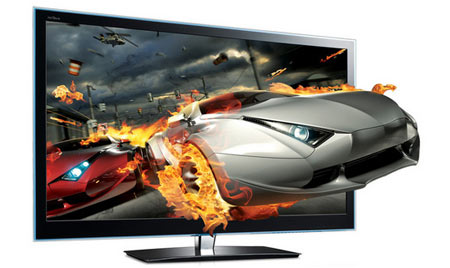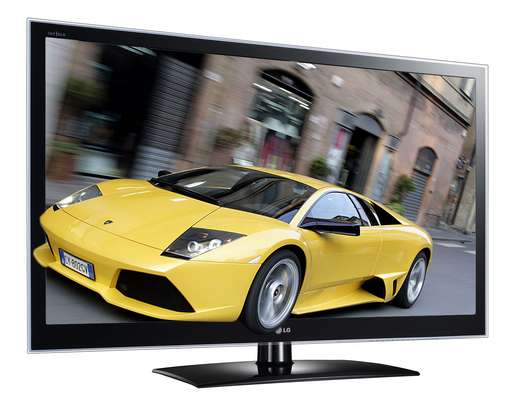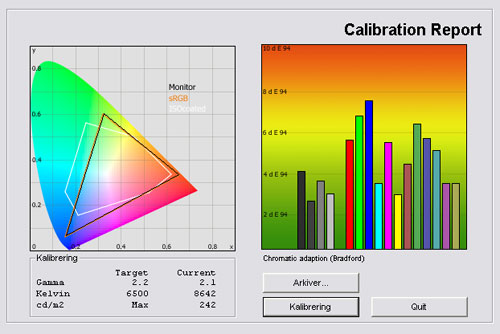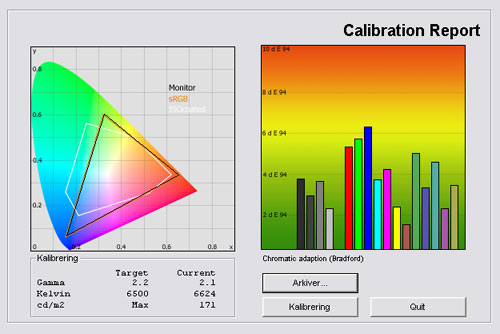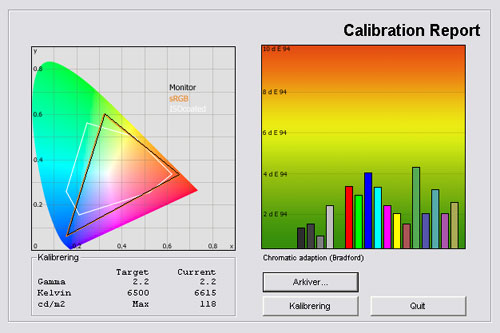Review: LG Cinema 3D LW6500
LG Cinema 3D LW6500 review
LG is now bringing their Cinema 3D TVs to the market with the LW6500 model. The Cinema 3D TV technology is the first to utilize the much cheaper polarized 3D glasses that you know from cinemas. This means lighter and brighter 3D glasses without batteries or flicker. LW6500 is also a traditional 2D TV and comes with LG’s new Smart TV platform.
The Cinema 3D technology looks interesting but is it a real alternative to the active 3D TVs? Will it affect 2D picture quality? And are the Smart TV features worth anything? FlatpanelsHD will find out in the LG Cinema 3D LW6500 review.
Update 21-08-2011: LG recently updated their 3D algorithm on their 3DTVs. Therefore we have updated the 3D section in this review: Update to LG Cinema 3D TV review
LG Cinema 3D LW6500 is available in 47, 55 and 65 inches called 47LW6500, 55LW6500, and 65LW6500 in the US. LG Cinema 3D LW6500 is available in 42, 47 and 55 inches called 42LW6500, 47LW6500, and 55LW6500 in EU.
Subscribe to our Newsletter, RSS feed or twitter to receive notice when new reviews are online. We’ll soon publish our Samsung D8000, Dell ST2220T, Panasonic DT30, Sony EX720 & Eizo SX2762 reviews as well.
Size: 47" widescreen Resolution: 1920x1080 Response time: 8 ms Contrast ratio: - Brightness: - Color support: 16,7 million colors Signal processing: 8 for each color Viewing angles (H/V): 178/178 Dot pitch: Panel type: LCD-TV with Edge LED Wall mounting: Swivel stand: Dimensions (HxWxD): 68.3cm x 111.5cm x 3.0cm (without stand) Weight 20.7 kg Built-in speakers: Input formats: 480p/i, 576p/i, 720p, 1080i & 1080p (50, 60 & 24p) Inputs VGA DVI (but possible to convert through HDMI)
Audio (type) (Audio in/out)
SCART (1 input)
S-video Composite Component HDMI (4 inputs, 1 HDMI 1.4)
Other Outputs Audio (type) (analogue out)
SCART S/PDIF (optical)
Other Tuners Analogue DVB-T DVB-T (MPEG4) DVB-C DVB-C (MPEG4) DVB-S DVB-S (MPEG4) Other Price and retailer:
| US retailer | UK retailer |
 |
Our first impressions
LG LW6500 has a design in matte black plastic with a transparent line around the bezel. In the right side of the frame LG has integrated some touch buttons.The stand is made from the same glossy black plastic and transparent outer layer. It has a manual swivel function.
Inputs are located on the back and besides the analogue audio outputs and a service port, all inputs and outputs are either pointing downwards or to the side.
LG’s Cinema 3D LW6500 is also pretty slim because of the Edge LED backlighting system
Test tools
Our TV signal is DVB-S (satellite) from Canal Digital and DVB-T (terrestrial). We also have an analogue TV connection. Testing is done with the DVE (digital video essentials) and Peter Finzel test DVD. Testing is also done with DVD, TV, Blu-Ray and Media center/PC.We use our own monitorTest. The software supports some of the traditional test patterns used to evaluate displays as well as some new and unique test patterns developed by the people here on FlatpanelsHD.
Sony PlayStation 3 is our Blu-Ray player.
All contrast measurements are based on the ANSI methodology.
Functionality
The remote control has not changed much from the 2010 models. Some buttons have been added to control the Smart TV functionality but besides that it still feels and looks a bit cheap.DLNA is also supported for streaming video, music and picture to the TV from other devices. Most video codes are supported. For the full list see LG’s official site.
Let’s move on to the Smart TV interface, which we took a preview of in this article. The Smart TV interface has a lot of functionality and we won’t cover everything but below you can see the main screen that also has some of the DLNA and other media features.
MediaLink is LG’s new media platform to stream video, music and pictures from other devices in the home – such as a PC, smartphone or iPad – to the TV. It uses the so-called Plex interface and therefore you should install Plex (supported on PC, Mac, iPhone, iPad and Android) for the best experience. From here you can select which videos to share and now you can wirelessly stream the videos to your LG TV.
In the middle you see the Premium Apps such as movie rental Apps, Facebook, YouTube and more. At the bottom you have Apps and some other features such as the web browser and App Store.
The App interface is pretty logical and navigation is easy but I had hoped for quicker load times. Often you have to wait more than 10 seconds to enter some of the Premium services. Video quality depends largely on the App and the supplier. LG’s Smart TVs will have excellent picture quality if the App supplier allows – unfortunately most don’t.
The YouTube App looks like this.
Below you see the Facebook App
Small games are also available.
You can also access an alternative App home screen.
The built-in web browser is interesting, especially because LG claims that it supports flash and java.
At least in the future. Unfortunately flash is not fully supported yet and we were told by LG that Flash 10 will be supported in a soon-to-come firmware. Below you see the FlatpanelsHD website but notice that the menu in the left side of the site is missing. This is a Flash 10 menu. Also, fonts are changed, which is a bad thing for a web browser.
The App Store is not yet available but will be updated with a firmware update later. The available Apps will depend on your country. The photos above have been taken on LW6500 connected to a Scandinavian internet connection, meaning that most of the App content is local.
Calibration settings
On the new LG TVs with Smart TV you need to enter the menus with the Home button and then head to the settings option on the screen. In the menus LG Cinema 3D LW6500 has these picture setting options: backlight, contrast, brightness, sharpness, color, tint, color temperature, TruMotion and Eco mode.
In the advanced menu you can control: Dynamic Contrast, Dynamic Color, Clear White, Skin Color, Noise Reduction, Super Resolution, MPEG Noise Reduction, Gamma, Black Level, Eye Care, Real Cinema, Color Gamut, and xvYCC.
You can also choose from these picture modes: Standard, Vivid, Cinema, Game, Expert1 and Expert2.
Energy consumption
Below I have measured energy consumption on the 47-inch LG Cinema 3D 47LW6500. |  | |
| Standby | 0.0 W | 0.0 W |
| SD+HD | 76.9 W | 59.6 W |
| 3D | 103 W | 103 W |
After calibration I measured power consumption to 56.6 W, which is impressive for a 47-inch TV. It’s also much lower than all 50-inch 3D plasma TVs.
I have also included a measurement of the 3D energy consumption. In the 3D mode the backlight is often maxed out to compensate for the reduction in light from the 3D glasses. Therefore the 3D mode also typically consumes more energy.
Calibration on LG LW6500
Below you can see an out-of-box measurement on LG Cinema 3D LW6500 in the Standard picture preset without Eco mode.The graph says this:
The number on the left is the delta value. Delta is a difference between two factors; here it’s the difference between the measured color on the panel and the actual color that is our target.
Out-of-box colors are too aggressive and oversaturated and LG has added too much artificial sharpness. However, the results are not extreme and we have seen worse.
I measured gamma rising from 1.8 in the dark tones to 2.3 in the bright tines. In practice this means that dark colors are too dark and the bright colors are a bit too bright. We’re aiming for 2.2 gamma. Color temperature was measured to 7816 - too high compared to our 6500 Kelvin target, meaning that picture on LW6500 are too bluish and cold in the standard settings. This is very typical for out-of-box settings on TVs.
I changed to the Cinema picture preset to take a new measurement.
The Cinema preset is better and although color accuracy is far from perfect the cinema preset gives us pictures closer to our reference levels.
I now did a calibration on LG Cinema 3D LW6500. LG LW6500 has no THX preset like some of LG’s more expensive models. Here’s my result.
After calibration I managed to get pretty accurate colors and close to 2.2 gamma. The color temperature is not very far from our 6500 Kelvin target and I’m satisfied with the result.
Below are my calibrated settings.
 | |
| Picture preset: | Expert1 |
| Backlight | 35 |
| Contrast | 90 |
| Brightness: | 50 |
| V/H Sharpness: | 50 |
| Color: | 50 |
| Tint | 0 |
| Dynamic Contrast | Off |
| Noise Reduction | Off |
| Mpeg noise reduction | Off |
| Super resolution | Off |
| Black level | Low |
| Real Cinema | Off |
| Color gamut | Standard |
| Edge enhancer | Off |
| xvYCC | Auto |
| Color filter | Off |
| Color temperature | Warm |
| RGB Method | 2 points |
| R contrast | 0 |
| G contrast | -2 |
| B contrast | 1 |
| R brightness | -7 |
| G brightness | 20 |
| B brightness | 5 |
| TruMotion | On/Off |
| LED local dimming | Off |
I used the Expert1 picture preset as a starting point and calibrated LW6500 with the RGB (red, green, blue) settings. If you’re mostly watching TV during daytime you might want to increase the settings called backlight.
Picture quality on LG LW6500
In this section I go through picture quality with the calibrated settings.LG LW6500 has a matte screen and therefore reflections from windows and lamps is not a big issue. The glossy bezel, however, has some reflections.
Let my start out by addressing the issue that some people have been discussing about Cinema 3D TVs and the effect on 2D picture quality. LG’s 3D technology used for the Cinema 3D models does not affect 2D picture quality in any significant way. The pixels are all reproduced like on a non-3D TV when you watch 2D and if you want to buy LW6500 and use it mostly for standard 2D watching, then no problem. In the picture below you see how the pixels are reproduced as intended (with an alternating black and white pattern).
In the calibration section I talked about color accuracy but color gradation is equally important. We want a TV to distinguish and reproduce all the small steps in colors and we use a smooth color gradient to test color gradation. What we want is a perfectly smooth gradient with no “color bands“.
Color gradation on LG LW6500 is fair but not on par with high-end models. We saw some bands in the semi-dark and dark colors suggesting that the panel reproduces not all colors correctly. LW6500 is pretty much on par with other mid-end LCD-TVs here.
SD picture quality is fairly good but comparable to most mid-end TVs. Detailing is fairly high but I personally think that Samsung’s Edge LED based mid-end TVs has the edge here and that SD picture quality is better on Panasonic’s mid-end plasma TVs such as the G20 from 2010.
HD picture quality is beautiful as always and LW6500 reproduced HD pictures with beautiful detailing. The real problem is with fast motion and like most Edge LED based LCD-TVs some blurring occurs and detailing is reduced in very fast action scenes. LW6500 is not slow but the motion reproduction is not on par with the best plasma-TVs and newer LCD-TVs with backlit LED scanning backlight systems.
On the other hand I didn’t notice Overdrive trailing (haloes around moving objects), which is a good thing. Input lag varies depending on the different circuits and if you want to lower input lag you should aim to deactivate the TruMotion system. Input lag was measured to 25-30 ms with the calibrated settings.
LG’s TruMotion circuit is designed to make fast moving images such as sport and action smoother. TruMotion is a fairly good system at that in my opinion but it also introduces a fair amount of artefacts in especially sports. I personally prefer to turn it off. But I know that some people prefer the smoother pictures so try yourself.
LG LW6500 also has a “LED local dimming” function in the menu but it’s not an actual local dimming function. LW6500 utilizes Edge LED which means that the LED are placed around the LCD panel and not behind. LG plans to release some backlit LED models with true local dimming in 2011 such as their Nano TVs.
Below I have measured black level and contrast.
 |  | |
| Black level | 0.15 cd/m2 | 0.08 cd/m2 |
| Brightness | 242 cd/m2 | 120 cd/m2 |
| Contrast ratio | 1600:1 | 1500:1 |
Contrast ratio +/- 100
After calibration I measured black level to 0.08 cd/m2. This is not comparable to the best LCD and plasma-TVs today and slightly above average. LW6500 is based on an IPS panel and therefore we would expect black level to be a bit higher than on the best TVs today. In a very dim room you can see that black is not pitch black but during the daytime LW6500 has high contrast, primarily because of the matte panel.
Shadow detailing is fair but not great. The 2-3 darkest grey tones were not distinguishable to black. This means that viewers will lose some detailing in very dark movies and games but this is very common on LCD/LED models today.
Below I have examined the LG Cinema 3D LW6500 a completely dark room to see if it has clouding, backlight bleeding or floating black issues.
LG LW6500 has some clouding and backlight bleeding around the edges of the panel but nothing to really worry about. Compared to other Edge LED based TVs LW6500 is actually doing pretty well.
3D picture quality on LG Cinema 3D LW6500
We used the PlayStation 3 and a 3D Blu-ray player to test 3D movies and 3D games.Update 21-08-2011: LG recently updated their 3D algorithm on their 3DTVs. Therefore we have updated the 3D section in this review: Update to LG Cinema 3D TV review
LG’s 3D glasses for their Cinema 3D TVs are so-called polarized 3D glasses that you also know from most movie cinemas. The glasses are extremely lightweight, require no batteries and have no flicker – and most importantly, the cost of new polarized 3D glasses is ridiculously low. The glasses come in many different variants such as the standard black one and this funky, red design.
I won’t say too much about 3D in general and what you should expect but instead refer to our Panasonic VT25 / VT20 review for a general 3D introduction.
In this test I want to examine 3D depth, 3D picture quality, 3D crosstalk and finally include a small comparison to some of the other 3DTVs on the market.
If you want to learn more about the differences between active 3D and passive 3D (LG calls it Cinema 3D) I suggest you read this article: Active 3D vs. Passive 3D (3D Cinema)
To sum it up I should point out that passive 3DTVs in theory have half resolution because the two different pictures are packed into the same frame. On active 3DTVs (like all 2010 3D models and most 2011 3D models) the two different pictures are packed in different frames, thus delivering Full HD resolution.
On the other hand – again theoretically – passive 3D TVs have no crosstalk, no flicker and put less strain on your eyes. So, that was the theoretical part, but what about the actual experience? Let’s move on to talk about that right away.
I compared LG’s Cinema 3D TV with passive 3D technology to a Panasonic GT30 with active 3D technology.
In practice I was able to see a difference. LG’s Cinema 3D has a softer 3D picture than Panasonic’s 3D plasma TV. The decrease in resolution is there and you can see it, but it’s not significant. LG LW6500 still shows detailed 3D pictures and the 3D depth is more or less the same on the two TVs.
I want to include a small suggestion for owner of the Cinema 3D before we more on. LG’s LW6500 uses the Standard picture preset by default in 3D mode. I suggest you use the settings provided earlier (but with higher backlight) and one thing you want definitely want to change is the sharpness setting. LG LW6500 has too much artificial sharpness in 3D so I suggest you lower the sharpness setting in the menu to 5-10 instead of 50. But let’s try to dig deeper.
As said before LG Cinema 3D LW6500 has a softer 3D picture than Panasonic GT30. You still feel that it’s a HD 3D picture but it’s not 100 % as crisp as Panasonic GT30. One the other hand LG Cinema LW6500 has numerous other advantages. First of all crosstalk is extremely low. It’s not eliminated but it’s almost invisible and lower in our stress tests than on Panasonic’s 3D plasma TV even though we have praised Panasonic for its low crosstalk in the past. Also, compared to pretty much every 3D LCD/LED model from 2010 I think LG’s Cinema 3D is a superior choice because of the high crosstalk on active 3D LCD/LED models. That also makes it the best 3D LCD/ LED TV on the market!
The 3D glasses are also great. They are lightweight and I experienced no flicker or strain on my eyes. Furthermore, the glasses let light pass through with almost no loss. That’s especially important when watching 3D in very bright living rooms.
The last point I want to discuss is actually a negative one. We usually recommend sitting close to a 3DTV for the best experience but with LG’s Cinema 3D you don’t want to sit too close. Why? Because you can see the pixels – or should we say lines. The polarized 3D glasses work by separating even lines from odd lines and projecting the different lines to each eye. Therefore you only see the even lines with the first eye and the odd lines with the other eye, and this effect is visible if you move to close to the TV panel. See the picture below. The missing lines between in the white font saying “Freeman” is basically what you can see with the other eye.
Also, I noticed that when panning over for example a football field you will see subtle artifact “lines” on LG’s Cinema 3D because of this principle. Therefore, consider going up in size if you’re planning on buying the LG Cinema 3DTV for the 3D capabilities.
So is Cinema 3D the new hot thing? I don’t have a final answer to that but it certainly has a lot of advantages over active 3D such as no flicker, no batteries, less eyestrain, cheap and lightweight glasses and almost zero crosstalk. But it also has some issues such as lower 3D resolution and “lines” in 3D pictures if you sit too close.
The pressing questions are; do the pros offset the cons? And is Cinema 3D a better 3D technology? I can’t answer those question with just yes or no because it depends on your needs. If you want the absolutely best 3D picture quality Cinema 3D does not deliver, but if you can settle for less (most can) Cinema 3D might just be perfect for you. One thing that I can conclude is that Cinema 3D is definitely a more mainstream 3D technology, and it’s probably fair to call it 3D for the masses.
PC and Media Center
The TV supports 1:1 pixel mapping. In order to achieve 1:1 pixel mapping you need to select the aspect ratio called “Just scan" in the OSD.Viewing angles
The viewing angles on LG’s LW6500 model are relatively wide based on the fact that the TV has a IPS panel. A small change in color intensity is visible from wide angles but LW6500 is in the better end of LCD-TVs.However, contrast and black is reduced from wide angles and the fall in black depth is noticeable.
Sound quality
The speakers in LW6500 are not very powerful and this was pretty much expected. They are weaker than most TVs today but on par with the slim Edge LED based TVs measuring 3-4 centimeters in depth.For movies, games and music I recommend separate speakers.
Conclusion
LG’s new Smart TV platform has potential but the App Market is not available yet and the web browser needs one more update. Therefore it’s hard to say anything definite other than LG has an interesting platform that we will certainly keep an eye out for in the future.We obviously focused a lot on 3D picture quality because LG with the introduction of their Cinema 3D TVs has introduced a new 3D technology to compete with the existing active 3D technology. And Cinema 3D is a great alternative. Despite the slightly less detailed 3D pictures it has tons of advantages such as almost zero crosstalk, cheap and lightweight 3D glasses without batteries, and no flicker. The polarized 3D glasses also cause less eyestrain in the long run. Based on that, I’m ready to call the Cinema 3D technology “3D for the masses”. It’s easier, cheaper and provides a good experience. Welcome Cinema 3D, you have potential.
However, the absolutely best 3D experience is still achieved with high-end 3D plasma TVs such as Panasonic GT30.
2D picture quality on LG LW6500 is decent but not better than typical mid-end TVs. The colors are fairly accurate after calibration and the response time is fast enough for most use. Black is not deep enough and we also saw some clouding from the Edge LED based LW6500 model.
All in all LW6500 is a good TV and the Cinema 3D technology is interesting on more than one level. It’s not a revolution but a much more mainstream 3D approach because of the ridiculously cheap 3D glasses. The extremely low crosstalk also means that it’s the best 3D LCD/LED TV today. 2D picture quality is fairly good but not beating the completion in the mid-end area. The Smart TV interface still needs a few updates but if it lives up to its promise, LW6500 is certainly a model to keep an eye on in the coming months. And if you’re looking for a 3D screen we recommend you to take a look at Cinema 3D.
Update 21-08-2011: LG recently updated their 3D algorithm on their 3DTVs. Therefore we have updated the 3D section in this review: Update to LG Cinema 3D TV review
Cinema 3D will also be available in the cheaper LW5500 range
Price and retailer:
| US retailer | UK retailer |
 |
 |  |  |
| 3D picture quality with no crosstalk | Black level | Living room |
| Smart TV platform with potential | Less detailed 3D pictures than active 3DTVs | Home Cinema |
| Much cheaper 3D glasses | Some clouding | 3D gaming |
| Inputs pointing to the side and down | Speakers | |
| No flicker when watching 3D |
Subscribe to our Newsletter to receive e-mails when new reviews are online. We’ll soon publish our Dell ST2220T, Panasonic DT30, Sony EX720, Samsung D8000 & Eizo SX2762 reviews as well.

